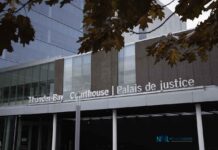Action Being Taken to Stop the Spread and Contain the Second Wave in CommunitiesTORONTO — In consultation with the Chief Medical Officer of Health, the Public Health Measures Table, local medical officers of health and other health experts, the Ontario government is introducing additional health measures for York Region. This public health region will be subject to modified Stage 2 restrictions for a minimum of 28 days and will be reviewed on an ongoing basis. “As the number of new cases in York Region continue to rise, it is evident that additional action is required to keep residents and workers safe from further spread of the virus,” said Christine Elliott, Deputy Premier and Minister of Health. “Our government will continue to listen to the advice of the Chief Medical Officer of Health and other health experts, so we can safely keep our schools open, protect our seniors and most vulnerable, and avoid the need to take harsher measures in the future. The health and well-being of Ontarians is and will remain our top priority.” Effective Monday, October 19, 2020 at 12:01 a.m., York Region will join Ottawa, Peel and Toronto public health regions in a modified Stage 2, as a result of their trends in public health indicators, including higher than average rates of COVID-19 transmission. The government, in consultation with public health experts and local medical officers of health, use a range of criteria on an ongoing basis to determine if public health measures need to be adjusted. These include COVID-19 spread and containment, public health capacity to conduct rapid case and contact management, the type and setting of outbreaks, incidence tracking, increases in hospitalization and ICU admission, and testing capacity. In York Region, the number of cases and hospitalizations are currently trending upwards and further action is required to help stop the spread of the virus in this community. From October 3 to October 9, 2020 York Region’s case rate increased by 49 percent to 38.7 per 100,000 people, above the provincial average. The number of COVID-19 hospitalizations in the region have doubled over the past week. In addition, the rate of infection is increasing; the positivity rate is 2.77 per cent, well above the high-alert threshold of 2.5 per cent. Since October 3, York Region has seen the total number of patients requiring an ICU bed jump from 63 to 72, and the number of patients requiring a ventilator went from 19 to 25 across the region. Measures under this modified Stage 2 include:
Schools, child care centres, and places of worship will remain open in these communities and must continue to follow the public healt h measures in place. Before-school and after-school programs will also continue to be exempt from these new restrictions and will remain open.. In addition to the measures being implemented in the Ottawa, Peel, Toronto and York regions, the Chief Medical Officer of Health continues to remind all Ontarians to:
For additional protection, the Ontario government is encouraging everyone to download the new COVID Alert app on their smart phone from the Apple and Google Play app stores. As these difficult but necessary public health measures come at a significant cost to small businesses, Ontario announced $300 million available to assist significantly affected businesses with fixed costs, including property taxes, hydro and natural gas bills and support them through its Main Street Recovery Plan. The Chief Medical Officer of Health and other public health experts continue to closely monitor the evolving situation across the province to advise if and when public health measures or restrictions should be adjusted or tightened. |
QUICK FACTS
|







